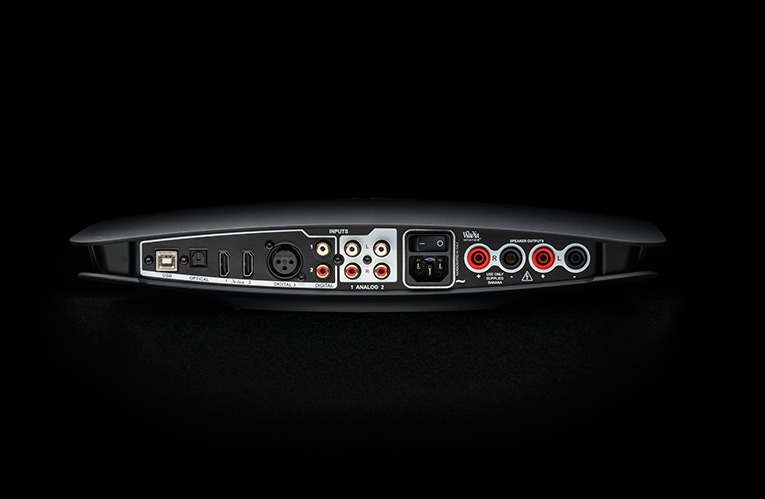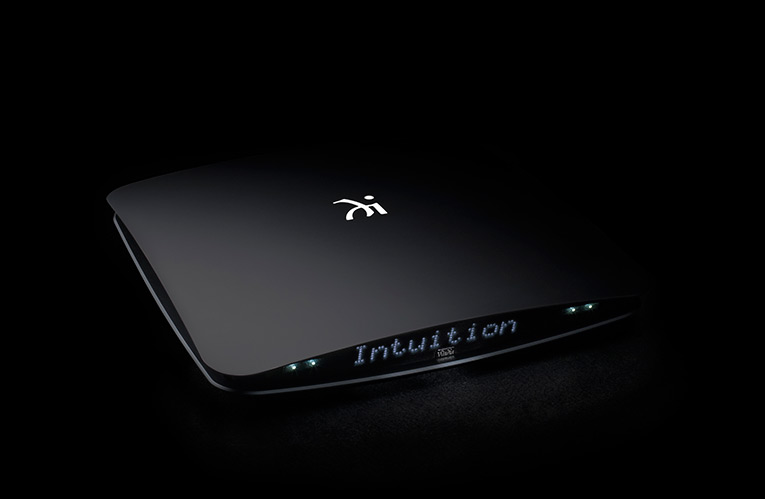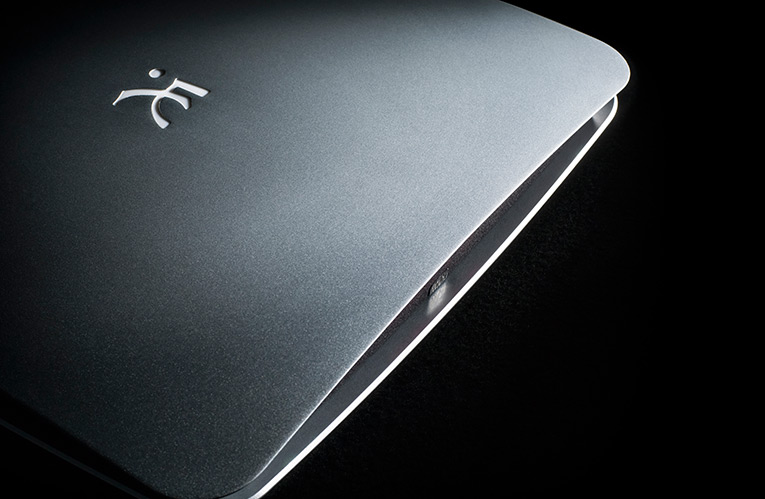 The refrain from older generations is almost always the same: Things were different back in the day. I suspect that when I’m 65 and watching my first grandchild being mesmerized by technology I can’t begin to fathom, I’ll have similar feelings. There’s an inherent suspicion when something very familiar changes -- an object or idea doesn’t become merely familiar over time, it becomes correct. While subtle alterations can be accepted with little opposition, the shifting of paradigms is almost always resisted. It’s human nature. Then again, it’s also human nature to strive, to improve, to better the established way of things.
The refrain from older generations is almost always the same: Things were different back in the day. I suspect that when I’m 65 and watching my first grandchild being mesmerized by technology I can’t begin to fathom, I’ll have similar feelings. There’s an inherent suspicion when something very familiar changes -- an object or idea doesn’t become merely familiar over time, it becomes correct. While subtle alterations can be accepted with little opposition, the shifting of paradigms is almost always resisted. It’s human nature. Then again, it’s also human nature to strive, to improve, to better the established way of things.
This way of thinking perhaps describes audiophiles more than other categories of enthusiast. We’re so entrenched in our vernacular, bound to our concepts of what a sound system should be, that anything novel is regarded with skepticism. That’s fine. There will always be a market, if a continuously shrinking one, for, shall we say, “traditional” audio products. That, too, is fine. Many industry folks I’ve talked with are unsure of how to engage younger listeners, how to introduce them to the wide world of high-end audio and demonstrate how exciting it is.
But they assume that their existing products will then seem more alluring -- that a twentysomething will say, “Oh, man, I can’t wait to buy a preamp, an amp, a digital-to-analog converter, and some cables!” Which is nonsense. The assumption is wrong. Rather than asking how we can attract new customers to our traditional product lines, our question should be What can we design that is intrinsically appealing to a younger audience?
That’s what Wadia Digital asked. Their answer is pretty damn cool.
Intuition
A name is important, and the name of Wadia’s Intuition 01 power-DAC signals two things: 1) that it is intended to be intuitive to use; and 2) per the binary “01,” it’s all digital. Immediately, then, it becomes clear that the Intuition 01 is a different type of product from a traditional high-end integrated amplifier. This power-DAC forgoes the analog preamplifier that, unless perfectly executed, does more to harm than preserve sound quality. Instead, its power amplifier is run directly from its digital-to-analog converter, with volume control and source selection done entirely in the digital domain. This architecture is no longer unique, but it can be argued that Wadia’s implementation of it is.
At $8000 USD, the Intuition 01 is not inexpensive, nor does it look inexpensive. Its 13.2-pound, 15”W x 2.4”H x 15”D case is not the usual box of folded aluminum, but has a complex, curved shape that was difficult to manufacture in the US. An Italian supplier was already in love with the project, however, and proceeded to create a machine and tooling that could work with the metal to create the shape required by the Fine Sounds Group's design guru, Livio Cucuzza. On the top panel is an illuminated Wadia logo, while there are pairs of LEDs on the front left and right of the Intuition’s narrow, tapering front panel. That front panel, like each of the side panels, is covered in a layer of thin black fabric -- one might assume the Intuition has no front-panel controls at all. But below each of the left LEDs are hidden buttons for input selection, with corresponding buttons for volume control on the right side. A central LED display lights up when a source is selected or the volume adjusted, then quickly goes dark. As a power-friendly class-D design, the Wadia is actually never fully off, remaining illuminated at all times unless deactivated via the master power switch on the rear panel. All in all, it’s an attractive package. My review sample was finished in brushed silver; finishes of black and classy-looking nickel are also available.

The remote control, a facsimile in miniature of the Intuition 01 itself, is a chunk of solid aluminum that feels very nice in daily use, with good button feel and a simple arrangement of five buttons. The central Mute button is flanked on left and right by volume up and down buttons; Input buttons are above and below. The symmetrical design, while visually attractive, can be a little troublesome -- no matter how you orient the remote, the button layout is identical. Like all infrared remotes, this one requires an uninterrupted line of sight between it and the Intuition 01, and with the Intuition’s IR sensor recessed in the front panel, I found it sometimes unresponsive -- I had to line up the remote at just the right angle. In tandem with the fact that the remote adjusts the volume level in half-step units of its scale of “0” to “99,” I frequently found myself mashing the volume buttons to quickly raise or lower the volume -- it never quite felt linear in operation. Intuitive in design if not operation, then.
More interesting is what’s inside the Intuition 01. At its heart is a class-D amplifier, made by highly respected manufacturer Powersoft, that’s claimed to output 190Wpc into 8 ohms or 350Wpc into 4 ohms, at 1% distortion. I was assured that the output also remains stable into 2 ohms -- the Intuition 01 should be capable of driving just about any loudspeaker. The total harmonic distortion is listed as <0.005% (no frequency range specified), with a signal/noise ratio of 113dBA, 20Hz-20kHz, and a frequency response of 3Hz-45kHz, -3dB, for 1W at 8 ohms.
At the heart of the DAC section is a 32-bit Sabre 9018 Reference chip from ESS Technology. This eight-channel chip is highly regarded, but the upsampling algorithm that Wadia uses is proprietary. It upsamples every signal coming into the Intuition 01 to 1.5MHz, and directly drives the chip’s delta-sigma modulator. This “non-ringing” method of upsampling is derived from Wadia’s 25 years of experience in designing DACs, going back to their Digimaster days. While Wadia originally applied this technology to ladder DACs, here they bring it to bear on the now-ubiquitous delta-sigma architecture. In the opinion of Wadia’s engineers, higher sampling rates contribute to better sound quality, while they also make use of apodizing filters.

There are seven digital inputs: asynchronous USB, TosLink optical, AES/EBU, two S/PDIF coaxial, and two Wadialink 12S. The Wadialink, Wadia claims, is a better connection method than S/PDIF, since it produces far less jitter. Other current Wadia products have Wadialink connections, and future ones will too. The USB input accepts signals up to 32-bit/384kHz, including DSD64, DSD128, and DXD. The remainder of the inputs can handle up to 24/192. Also included are two analog inputs, though these are routed through an analog-to-digital converter, then fed to the Intuition 01’s built-in DAC. Still, the ability to connect a turntable to an otherwise all-digital system is convenient, if not copacetic for analog purists.
The Intuition 01 slid easily into my system, replacing my reference Hegel Music Systems H300 integrated-DAC, and it partnered a variety of speakers, including my reference KEF R900s, Sonus Faber’s Olympica Is, and Vivid Audio’s Giya G4s. The Intuition 01’s speaker terminals accept only banana plugs. That rendered my Dynamique Audio Caparo speaker cables useless, but for this review the folks at Dynamique were kind enough to lend me a banana-terminated pair of their Celestial cables.
Sound
Class-D amplification has a reputation for a distinctive sonic signature -- edgy highs, a frequently thin midrange, deep bass that’s a bit lean -- that, in my experience, it has largely earned. This is a generalization, to be sure, but I’ve heard class-D amps from numerous manufacturers that all share these characteristics.
Whatever I may have thought of class-D sound before, Wadia’s Intuition 01 sounded nothing like I expected. Solid-state design has matured to the point where it can be difficult to tell the difference between one high-end, class-AB design and the next. The amplifier in my Hegel H300 integrated-DAC, for instance, sounds quite similar to the amp in Simaudio’s Moon Neo 340i integrated-DAC. The Hegel’s sound is a bit more incisive and forward, while the Neo’s is heartier and more relaxed. A sea change this is not. The Wadia, on the other hand, sounded quite a bit different.

First, the Intuition 01 never called attention to itself. I work from home quite a bit, and often have the luxury of playing music while doing research or writing something up. In reviewing other gear, there’s almost always been something that’s struck me about the way a product sounds, a characteristic that lures me away from my other work: a speaker’s rolled-off highs, an electronic component’s vibrant midrange, etc. Not so with the Intuition 01, not even once. Instead, it sounded quite smooth, to the point where I thought it might not be passing on the finer details of a recording. Combined with a laid-back, almost recessed demeanor, it had some of the qualities of far more expensive class-AB amps that deliver the music with a sense of ease. The Wadia’s personality was almost at odds with its cool, futuristic appearance, and it worked rather well. I can’t imagine anyone disliking the Intuition’s sound.
Listening to “Charms,” from Abel Korzeniowski’s excellent score for the film W./E. (16-bit/44.1kHz ALAC, Interscope), I began to hear why. It’s a grand, melancholic composition performed by a 60-piece orchestra recorded in London’s Abbey Road Studios. It begins slowly, but quickly becomes a torrent of strings. And while it’s not exactly a bright-sounding work, there’s plenty of microdetail to cull from the broad recording. The Wadia was ever so polite in the treble, just enough that it would never be taken for the class-D amp that it actually is. The broad soundstage didn’t have the zest or sparkle that many a high-powered class-AB amplifier might be expected to convey, and I suspect that this was done very much on purpose. Some folks really don’t like the classic “solid-state” sound, in which everything is crystal clear and articulated to an almost obnoxious degree. I was told by the folks manning Wadia’s room at the 2014 Consumer Electronics Show that the Intuition 01 wasn’t designed to be a traditional audiophile component -- that much is clear from its appearance. But there’s really nothing to dislike about such an easygoing, laid-back sound. Appealing to the largest number of listeners was almost certainly Wadia’s goal, and their engineers have struck a fine, if cautious, balance.

In music with prominent vocals, this had the effect of pushing performers a bit farther back in the soundstage than I’m used to. In “Dark Fantasy,” from Kanye West’s My Beautiful Dark Twisted Fantasy (16/44.1 ALAC, Def Jam), the eminently modest Chicagoan rhymes in his signature manner, and while his vocals normally have a bit of bite, the Wadia seemed to soften this characteristic. It’s a big ask for an amp to deliver every ounce of resolution without sounding almost caustic, almost too detailed. Based on my listening, the Intuition fell shy of unraveling and resolving the finest details. But given how downright easy it was to listen to an hour or even more of Mr. West through the Wadia in a single sitting, I can easily forgive this. After all, as I was told by Wadia at CES, the Intuition 01 was not intended as a component with which folks should revel with their three favorite albums for the rest of their lives. Rather, it’s intended for true family use, in a living room, so that all may enjoy the fruits of its stylish labors.
The Intuition sounded its absolute best with DSD and DXD recordings. The Norwegian label 2L plied me with samples in the DSD64, DSD128, and DXD formats, and I was quite taken with the results. Instruments and voices were more distinctly separated on larger soundstages, with greater litheness to the sound. Most interesting was the tonal density and sonic weight in the Allegro of Mozart’s Violin Concerto No.4 in D, K.218, as performed by Marianne Thorsen and the Trondheim Soloists, led by Øyvind Gimse (24/352.8 DXD, 2L). There was greater presence and visceral weight to the sound than I would have ever thought possible from a class-D design. Beyond that, the music sounded huge, with seemingly zero grain, and even less glare. I continue to be moved by just how much better high-resolution recordings sound than “Red Book” CDs. Interested buyers would do well to sample the Intuition 01’s handling of DSD and DXD recordings -- I found it pretty special.
Comparison
While they cost less than the Intuition 01 ($8000), Hegel’s H300 ($5500) and Simaudio’s Moon Neo 340i ($4600, or $5400 with XLR inputs and built-in DAC) offer much of the same connectivity in more traditional packages. More or less generic-looking cases, big volume knobs, and uninspired styling are par for the course here, as are greater weight and size. The Neo 340i offers only 100Wpc, while the Hegel brings 250Wpc to bear, each into 8 ohms. With substantial toroidal transformers motivating excellent class-AB amplifier sections, and full-featured DAC sections capable of accepting resolutions up to 24/192, these are excellent all-around integrated-DACs.
As stated above, the Hegel’s sound has a shocking, überclean clarity and strong powers of resolution. Depending on the speakers it’s paired with, however, the Hegel won’t necessarily be a long-term companion for some listeners. While I like its clean, forward portrayal of my music, it may well turn some folks toward kinder-sounding gear. It also offers 60Wpc more than the Wadia, greater flexibility in connections, and a more fully featured remote. Despite this, the Intuition 01 is an alluring alternative, with a sleek design that outclasses the Hegel’s staid, folded aluminum. And over the long term, I suspect that, for most listeners, the Wadia’s more intimate sound will trump the Hegel’s modest advantage in resolution.
The Simaudio Moon Neo 340i sounds a bit more robust through the midrange than the Hegel, and less lively through the treble. Most of the outright clarity and resolving ability are retained, however. Accordingly, the Sim falls somewhere between the Hegel integrated-DAC and the Wadia power-DAC. Ultimately, the Intuition 01 sounds slightly smoother across the audioband and is equally resolving, albeit with a mildly darker tonality. For those who prefer a richer, denser sound, the Simaudio may be an affordable alternative to aspiring Intuition 01 owners, but its cheap plastic remote and conventional though well-built chassis demonstrate the concessions that go with it.
Conclusion
Wadia’s Intuition 01 is a daring, forward-thinking product. Its distinctive style will surely find many admirers, and it offers an alternative to the dour, bulky components that so frequently occupy listeners’ equipment racks and sight lines. It also offers very strong, if not standard-setting performance, with support for every popular digital audio format in existence, up to and including DXD. What I’m most impressed with, however, is the Intuition 01 as a package. It’s a full-featured, power-efficient component that accepts all manner of digital and analog inputs, with a bespoke remote and an attractive design that will harmonize with most living spaces. Hardcore audiophiles may scoff at such a product, but I’m confident that the Intuition 01 will resonate with far more potential buyers than the average integrated amplifier. Well played, Wadia.
. . . Hans Wetzel
hansw@soundstagenetwork.com
Associated Equipment
- Speakers -- KEF R900, Vivid Audio Giya G4, Sonus Faber Olympica I
- Integrated amplifier-DACs -- Hegel Music Systems H300, Simaudio Moon Neo 340i
- Source -- Apple MacBook Pro computer running Audirvana and iTunes
- Speaker cables -- Dynamique Audio Caparo and Celestial
- USB cables -- DH Labs Silversonic, Nordost Blue Heaven
Wadia Digital Intuition 01 Integrated Amplifier-DAC
Price: $8000 USD.
Warranty: Three years parts and labor.
Wadia Digital
2 Chambers Street
Binghamton, NY 13903-2699
Phone: (607) 723-3539
(607) 724-0549
E-mail: sales@wadia.com
Website: www.wadia.com





















